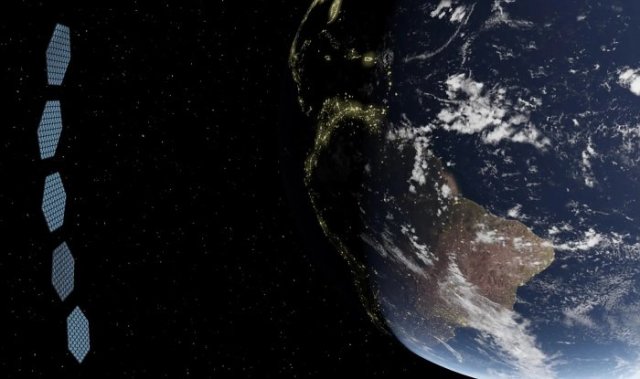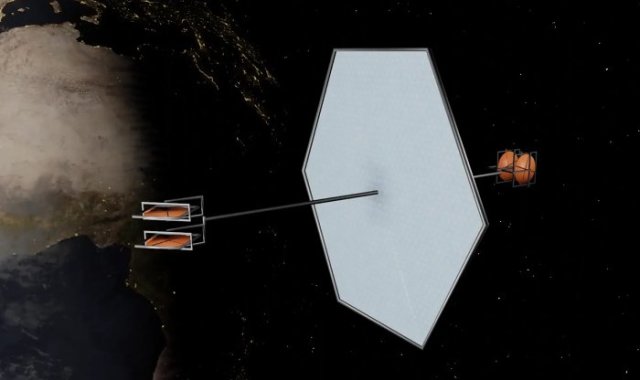
Orbital mirrors
Serial launches of reusable Falcon 9 rockets from SpaceX have reduced the cost of putting cargo into orbit to $1,500 per 1 kg. When the big Starship rocket starts flying, the price will drop by another third, and when these missiles can be used on a permanent basis, the price will drop to $232 per 1 kg. This is the threshold level that makes various daring experiments in space profitable, and the launches themselves are accessible to small private structures.
The Solspace project from scientists from the University of Glasgow is focused specifically on this price factor. They intend to build a full-fledged orbital grouping of reflectors of sunlight to transmit it to Earth. Here, this light will be received by the typical fields of solar panels and generate additional energy from it. The operation of the system will not affect light pollution in any way, the brightness of the reflected light does not exceed the background lighting on a cloudy day.

Orbital mirrors
The idea of the project is to use standard solar power plants at an unintended time for them – at dawn and dusk, when natural light is minimal. However, it is during these periods that maximum energy consumption is observed, so adding it will be beneficial. The reflectors in orbit are configured so that during the flight over the Earth they change the direction of light and "aim" at the selected power plants, without creating problems for everyone else. According to the project, it is required to deploy hexagonal reflectors made of aluminized kapton with a face length of 250 m in space. Their total area will be 162,380 sq. m., and the spot of reflected light on the ground will reach an area of 10 sq. km, but will exist for only 17 minutes in one pass. This will help to generate up to 36 MW of energy per pass, which will smooth out peaks in electricity consumption on the surface.
Alexander Martynenko
